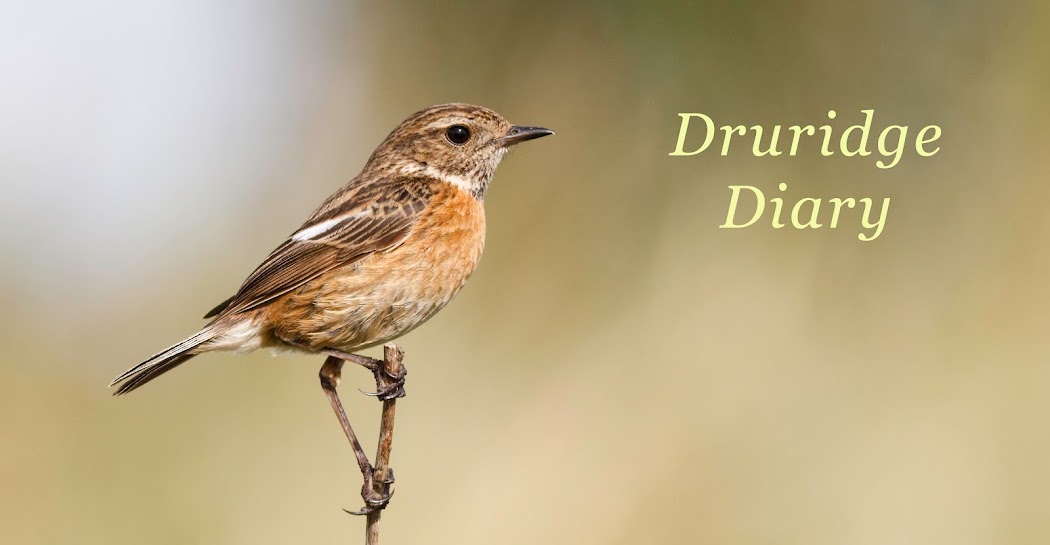Last night, the forecast for today was rain - all day.
So this morning, we didn't set an alarm, when we got up it wasn't raining and it was calm. The forecast still predicted showers, but we headed down to Druridge and put some nets up, you've got to make the most of any chance in the autumn. Whilst we sorting the nets, the sky was full of
pink-footed geese - easily 6000 passed over. A small flock of about eight brambling flew south and a
yellow-browed warbler called form the bushes by the car
There were a few showers, but they didn't really come to much, we furled a couple of nets early on but continued ringing with three nets up for the whole day. It was worth the effort, as we caught 60 birds in total of 14 different species.
Of note was a flock of
lesser redpolls - we caught 10 in total, all within an hour, I think they were just passing through.
 |
| Lesser redpoll - a nice pink male |
We caught a very late
willow warbler (rare beyond September at Druridge), two chiffchaffs and five blackcaps. One of the blackcaps was female that we first caught in the spring as breeding female, she must've nee ready for the off as she had built up a large amount of fat (migratory birds build up fat ahead of migration).
 |
| Late willow warbler |
 |
| male blackcap |
 |
| female blackcap |
Despite the huge arrival of thrushes yesterday, they must've all gone straight inland as we only caught two song thrush and
redwing today - one of the song thrushes was a retrap, Tom Cadwallender and I caught it in October last year as first-year bird. I wonder where it's been since?
 |
| Redwing |
Also of note was a magpie - Not everyone's favourite species and some it will probably end up in the farmers larsen trap. It was a first-year bird and only the second we've ever caught at Druridge. Despite they're reputation amongst 'country folk' they are incredibly intelligent and very beautiful birds.
 |
| Magpie - only the second one we've caught at Druridge |
Bizarrely, we also caught our first wren of the year today. Last year we caught more wrens than any other species, but the 'beast from the east' wiped them out and there were no breeding bird at Druridge this year. The five we caught today will be post-breeding dispersers from elsewhere.
 |
| wren - first of the year! |
Today was also WeBS count day. As the Budge fields are still pretty-much dry it didn't take too long and there wasn't much of note.
As I was packing up the nets at about 4pm, the skies cleared and the sun came out. I stopped by the plantation and birded until nearly 6pm. Most of that time was spent trying to get detail on a grey-looking phylosc in the sycamores. It was really tricky to get decent views, but it was a chiffchaff, very grey/off-white below and grey above apart from green in the wings - it looked like a
Siberian chiff, it eventually called and gave its ID away as just that. I only managed a very poor, arse-end photo.













